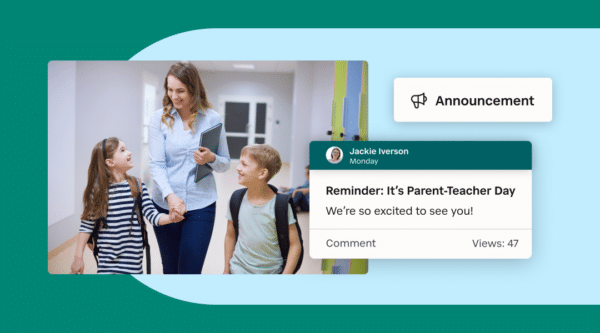
Featured Resource
Why Over Half of California School Districts Trust SchoolStatus
Read More >Join Mission: Attendance to reduce chronic absenteeism in 2025-26! >> Learn How <<





Family-teacher conferences traditionally offer parents a window into their child’s performance and progress, allowing teachers to discuss achievements, challenges, and areas of growth. Yet, one party is notably absent from these conversations: the students themselves. Student-led conferences (SLCs) aim to change this dynamic, offering students “a seat at the table” to present their perspectives, showcase their work, and set personal goals. This guide explores the ins and outs of SLCs, including their structure, benefits, and best practices for success.
Unlike traditional conferences, student-led conferences empower students to take ownership of the discussion. Instead of simply hearing their progress from teachers, students actively present their achievements, challenges, and goals. Schools may implement SLCs in different ways, such as an “open house” style, where families visit classrooms, or by holding conferences with multiple students in a single room. For example, at Kate Waller Barrett Elementary School in Stafford, Virginia, SLCs foster an inclusive, student-centered approach.
For Students: SLCs embody the student-centered learning approach, helping students develop a stronger connection to their learning. Research shows that student-led conferences increase students’ confidence, self-reflection, and responsibility for their education. By taking an active role, students feel valued and heard, contributing to a sense of ownership that can be transformative.
For Teachers: Teachers find that SLCs open valuable lines of communication with students, often revealing insights that go beyond traditional assessments. This format encourages teachers to work closely with each student to review strengths, challenges, and overall progress, offering a more comprehensive view of each child’s learning journey.
For Families: Families gain a richer, more authentic understanding of their child’s progress through firsthand examples of student work, strengthening school-home communication. Many find the experience more engaging and informative than standard report cards, as it opens a direct line of communication between home and school. This approach provides insights that empower families to support their child’s growth at home more effectively and with a clearer sense of their needs and achievements.

Improve engagement with your district’s approach to family-teacher conferences.
Download NowUsing SchoolStatus Connect simplifies conference organization:
This setup takes only minutes, allowing you to focus on creating a meaningful, impactful experience.
Books
Guides and Templates
For a full list of resources, visit Edutopia’s compilation for educators.Ready to explore the benefits of student-led conferences in your classroom? Reach out for a demo of SchoolStatus Connect and discover how it can support seamless family-teacher communication. Start fostering student ownership and family engagement today.
 SchoolStatusSchoolStatus gives educators the clarity and tools they need to get students to class and keep them moving ahead. Through our integrated suite of data-driven products, we help districts spot attendance patterns early, reach families in ways that work for them, and support teacher growth with meaningful feedback. Our solutions include automated attendance interventions, multi-channel family communications in 130+ languages, educator development and coaching, streamlined digital workflows, and engaging school websites. Serving over 22 million students across thousands of districts in all 50 states, SchoolStatus helps teachers and staff see what matters, act with speed, and stay focused on students.
SchoolStatusSchoolStatus gives educators the clarity and tools they need to get students to class and keep them moving ahead. Through our integrated suite of data-driven products, we help districts spot attendance patterns early, reach families in ways that work for them, and support teacher growth with meaningful feedback. Our solutions include automated attendance interventions, multi-channel family communications in 130+ languages, educator development and coaching, streamlined digital workflows, and engaging school websites. Serving over 22 million students across thousands of districts in all 50 states, SchoolStatus helps teachers and staff see what matters, act with speed, and stay focused on students.
News, articles, and tips for meeting your district’s goals—delivered to your inbox.



Ready to learn more about our suite of solutions?
